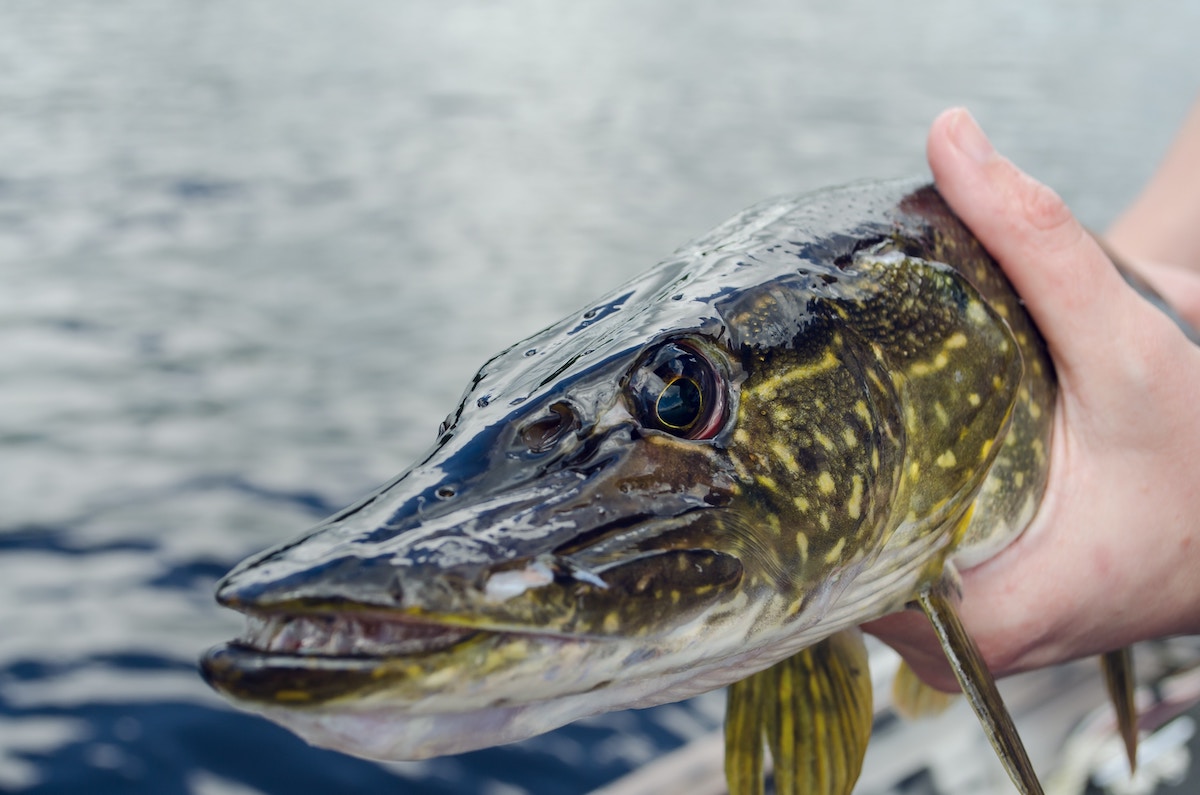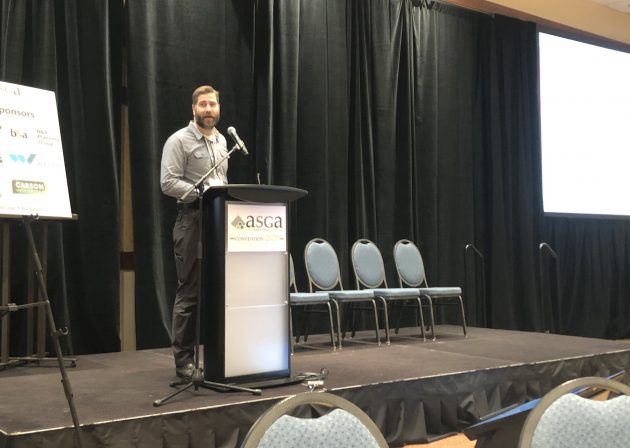
News
Updates and prohibitions of Fisheries Act explained at ASGA 2020
No person shall kill fish, unless fishing
January 11, 2020 By Jay Koblun

Scott Holroyd from Kingfisher Aquatics gave a talk at the Alberta Sand and Gravel Association 2020 Convention on updates to the Federal Fisheries Act and a reminder to all in attendance that, “No person shall kill fish, unless fishing.”
According to the act, the word fish includes and is defined as (a) parts of a fish (b) shellfish, crustaceans, marine animals and (c) egg, sperm, larvae, spawn, spat, and juvenile stages of everything mentioned above.

Scott Holroyd from Kingfisher Aquatics talking at the Alberta Sand and Gravel Association 2020 Convention on June 8.
Holroyd said there have been three versions of the act in the last decade with the biggest changes having occurred in 2012 and 2019. The changes updated in 2019 were:
– The Fisheries Act once again applies to all fisheries.
– “Harmful Alteration, Disruption, or Destruction” replaced the term “Serious Harm”.
– Introduction of Codes and Practices.
– DFO (Department of Fisheries and Oceans) involvement is required on all projects not covered in the Codes of Practices.
Holroyd spoke on the three most commonly applicable prohibitions for industry in Alberta. They are:
- Don’t kill fish.
- Don’t release deleterious solutions.
- No harm alteration, disruption or destruction of fish habitat.
He also spoke on how all this applies to the sand and gravel industry.
“No person shall carry on work, undertaking or activity, other than fishing, that results in the death of a fish,” he said. “Remember that the Fisheries Act applies to all fish and anywhere a fish might be. If fish are in your pits, you are responsible for their well-being and ensuring that they do not remain trapped.”
Holroyd addressed whether or not a producer’s project requires DFO review or permitting under the Fisheries Act.
“You can double-check the DFO website for guidance,” he said, adding a few questions a producer should always ask before moving forward:
Key Questions
- Is your project near water?
- How will your project interface with surface or groundwater?
- Is the nearby water body a fish habitat?
Holroyd said if a project is near water consider if you will require a permit.
“A general rule of thumb is if you require a Water Act approval for a project, check to see if Fisheries Act also applies to your project,” he said.
HADD stands for Harmful Alteration, Disruption, or Destruction. Any form of HADD equals an impact to fish habitat, which is prohibited in the Fisheries Act.
If the DFO determines that a project will result in HADD, producers may: abandon the project, alter their plans and request another review, or, prepare a habitat offsetting plan and apply for an authorization under the Fisheries Act.
One of Holroyd’s biggest take aways from the session was not to let fish get into your pit. “Onus is on the operator to make sure they are no fish in your pits,” he said. “Prevention is the best medicine in this case.”
The ASGA convention took place Jan. 8-9, in Edmonton.
Print this page